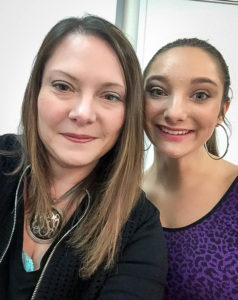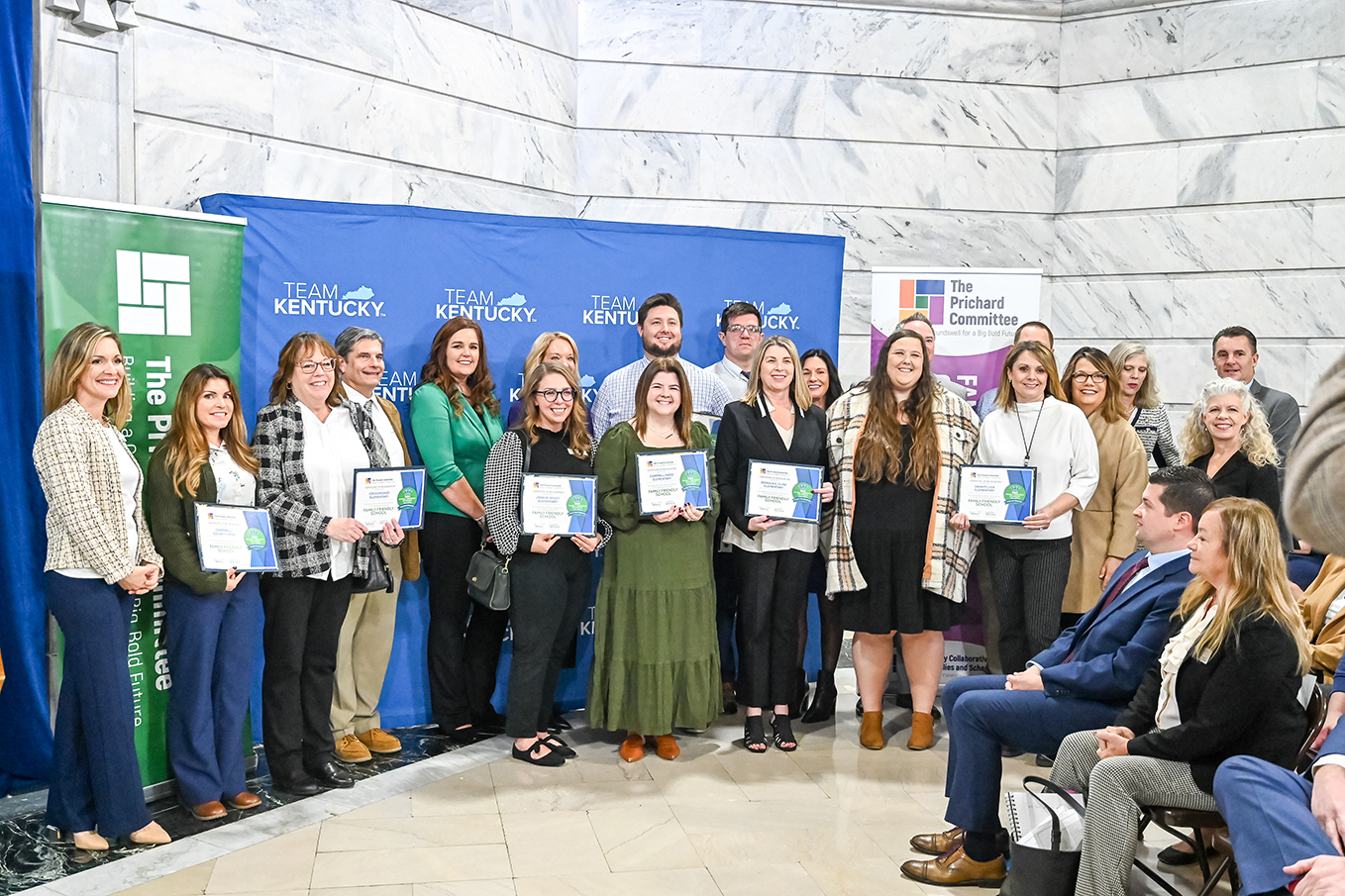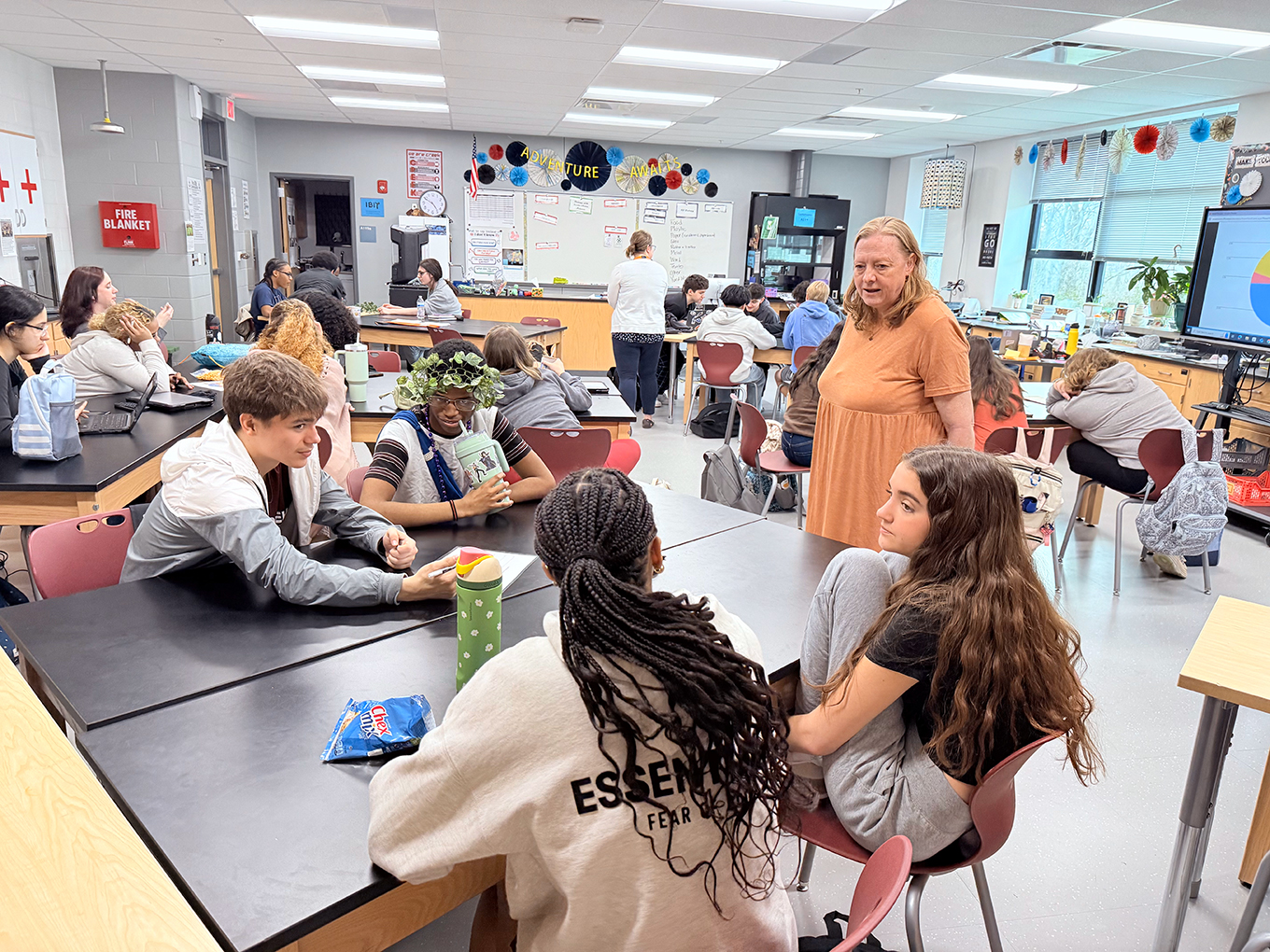
Allison Slone and Madison Marie Ortega
By Allison Slone
To my delight, teacher leadership has recently gained acceptance across Kentucky due in part to organizations and events like Hope Street Group, Edcamps and Elevating and Celebrating Effective Teaching and Teachers (ECET2KY). These groups and events allow teachers to lead each other and their schools both within and beyond their classrooms.
As with any great change, more change is inevitable. Since teacher leadership has increased, students also are beginning to recognize their partnership role in the business of education. Student-led learning is a hot topic among educators and increasingly is accepted as the best way to keep kids engaged and successful in the classroom.
During this past school year, student Madison Ortega – now a freshman at Rowan County Senior High School – exhibited leadership skills within our school and amongst her peers. But she desired to be involved in more events and organizations that would allow her to build on those skills. I introduced Madison to a world of student voice and advocacy through the Prichard Committee Student Voice Team, and she quickly rose to the occasion. I recently asked Madison a few questions about student voice.
What is student voice?
“As a student, I feel, in simplest terms, student voice is the ability to have a say in the matters that are so profoundly affecting us and our education. However, it goes much deeper than that. Each student is different. Each student has different opinions and they have different learning needs.
“When student voice is present, it allows us all to be heard and to actually have an impact on the day-to-day happenings within the school walls. It ensures that each and every one of us is visible, and it gives us a sense of belonging, enabling us to look forward to going to school each and every day.”
How does student voice improve engagement and buy in?
“School is, for many of us, the biggest part of our lives. It takes up the majority of our time and it ends up being something we can take a lot of pride in. Being able to come into our classrooms every day, knowing that we are respected and valued, is an important part of that. We enjoy being included in the construction of our learning. Student voice in action not only helps steer our education in the right direction, but it also helps to create a happy, more positive learning atmosphere.”
What does student voice look like in today’s schools?
“We are the ones in the classrooms. We know precisely what is needed for us to further our education. We don’t want student-affecting decisions to be made simply around us – we want to contribute our view. True and effective student voice could look like this:
- “offering students opportunities to discuss issues and concerns with their school’s staff;
- “offering students meaningful ways to weigh in on decision-making;
- “adding a student member to School-Based Decision Making Councils;
- “truly allowing and encouraging students to serve as partners with adults in order to make real improvements within their school.
“When I attended a town hall hosted by Kentucky’s Commissioner of Education Stephen Pruitt late last school year to share my opinion that students are taking an overwhelming number of tests, I was given a great and thorough response by Dr. Pruitt. He expressed that he, too, believes student voice is a top priority for our school systems.”
How does the incorporation of student voice impact school culture?
“School climates, time after time, have been shown to be at its best when students and their concerns are taken seriously. But our voices can’t be relevant solely in the classrooms. While our legislators know a lot, they don’t know in this day and age what it’s like in our classrooms – education is different now. Our input needs to be present in the policymaking of education.
“We bring a vital perspective to the table which no one else can offer. We experience firsthand the ins and outs of education in our schools, often making us the most capable of solving any problems and creating positive outcomes. We are the biggest stakeholders here, and the future of our schools depends on us to be treated as such.”
Looking ahead, what does the future hold for student voice in Kentucky?
“I firmly believe the future for the students of Kentucky has the potential to be a bright one. We are beginning to see student voice take its rightful place in education, and every day the number of eager and informed students who are determined to have a seat at the decision-making table increases.
“Educators, administrators and policymakers are starting to welcome the idea that students aren’t just our future, but are very much our present as well. I’d like to close by asking what, as an educator, are you doing to support student agency and voice in your learning community?”
The idea of student voice is taking hold all across the state of Kentucky. Students are now serving on councils, committees and school boards. Student voice teams are stronger in number and influence. As the idea of student voice spreads, the importance of and the acceptance of students having a seat at the decision-making table, continues to grow.
The future is a bright one in Kentucky. The students are our future, why shouldn’t they also be our right now?
Madison Marie Ortega is a student at Rowan County Senior High School and a member of the Prichard Committee Student Voice Team. Allison Slone is a special education teacher at Rowan County Middle School, 2016-17 Hope Street Group Kentucky State Teacher Fellow, Kentucky Department of Education Dyslexia Task Force Member. She also is a member of the International Dyslexia Association’s Kentucky chapter, Decoding Dyslexia Kentucky-East, KYREADS and was the dyslexia education consultant for Miss Kentucky 2015.




Leave A Comment